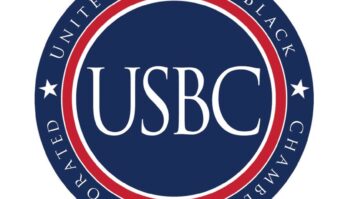
Scannocular for the racing car enthusiast was used at the track to keep touch with a favorite driver. I’ve always had a penchant for the weird, the off-beat, the non-mainstream. In high school I felt most at home with fellows who were ostracized by the general student populus, who acted and thought differently, had the intestinal fortitude to walk the road less traveled and were genuinely interesting individuals.
The same affinity goes for electronic devices; the weird stuff interests me. That’s why I recently acquired a Memorex Scannocular from an eBay auction.
Many folks will remember Memorex as the company that manufactured recording tape, but apparently they ventured into the radio world 16 years ago when they came out with this scanning device for race car fans.
At the track you could listen to your favorite race car driver on his/her specific transmitting frequency and keep an eye on the car at the same time while peering through the built-in binoculars. Pretty sensible and useful device by all accounts, and even though I’m not a racing fan, the weirdness of it all was a draw.

Scannocular from Memorex, a combo radio scanner and 8 x 25 binoculars. Talk about innovation!

The back of the box boasts Scannocular’s virtues, one of which includes the 800 MHz band. The “Buy It Now” price was $26 plus shipping, and I hit the button of no return. In a few days it arrived in the mail along with the original box, packaging, manual, rubber duck antenna, lanyard with Memorex logo and headphones.
It was in mint condition cosmetically and electronically; even the binoculars needed no cleaning. So after inserting fresh batteries, reading the manual and programming in the local first responder frequencies, I was ready to evaluate its performance as a scanner. Even though it was designed originally for race car aficionados, this device has now fallen out of use due to new technologies and can be repurposed as a general purpose desktop/portable scanner for listening to police, fire, EMS, marine, aircraft, FM radio, etc.
FM, TOO
First off, the Scannocular comes programmed for the scanning enthusiast with many popular bands such as marine, ham, aircraft, NOAA weather, police, etc. You can also receive FM broadcasts to boot. However, you can program up to 100 channels of your own preference, and it’s pretty straightforward to do so. You can even insert alpha tags (i.e., the name of the station you are listening to) if you have the patience. Not too shabby for a $26 scanner.
Within an hour or so, all 56 of my favorite channels were programmed into the Scannocular’s memory, and the National Oceanic and Atmospheric Administration weather channels were scanned as a first pass to evaluate its performance. With the supplied antenna, the NYC (KWO-35) and Allentown, Pa. (WXL-39) NOAA weather stations came in loud and clear.


The clean, neat, organized dashboard of Scannocular makes it a snap to program. Note the old TV (FM/TV) band button.8 x 25 sport binoculars were mounted on the underside of Scannocular. For better performance, the Scannocular has a BNC antenna jack for connection to an outdoor antenna, and once connected to my broadband antenna on the roof, it worked as well as any scanner I’ve ever owned. It also has a search function for finding unknown frequencies in your area.
The only downsides to this radio is the lack of an adjustable squelch, no built-in speaker, no programmable delay (default is about 5 seconds) and no provision for attaching a wall-wart (aka A/C outlet power transformer) for external power. I chose to use good rechargeable batteries and it seems to run forever between charges.
The Scannocular is a no-frills rudimentary scanner that performs well and doubles as a great conversation piece to show your radio compatriots; it engenders smiles and occasional laughs due to its eccentricity. It is a part of racing history, guaranteed to invoke interest among those who now use smartphone apps to accomplish the same goal.
You’ll find these up for auction now and then, so if this article has piqued your interest in the weird, different and offbeat, don’t let your inner nerdy voice be silenced; be part of that bohemian brigade who find value in the odd and uncanny.
Mario Filippi is a freelance writer, radio amateur (N2HUN) and an avid shortwave, longwave, VHF/UHF and satellite enthusiast.He wrote about RDF radios in January; read it at radioworld.com keyword RDF.











